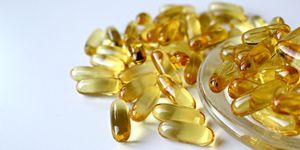Curiosity Captures Shimmering Martian Clouds
Mars has a thin atmosphere without much humidity, making cloudy days rare. But clouds can be found sometimes near the Martian equator during the coldest period of the year when the Red Planet is furthest from the Sun. But one Martian year ago, two Earth years, NASA's Curiosity Rover captured images of clouds earlier than was expected. This year, researchers started looking for the clouds again by late January. That effort has revealed images of wispy puffs that can be seen in the gifs below, some of which look iridescent. This research might also help scientists learn how clouds form on Mars.
Usually, Martian clouds are about 37 miles (60 kilometers) high and are not normally found at higher altitudes. They are typically made of frozen water droplets. But these clouds are higher than usual, where it's even colder. As such, they may be made of frozen carbon dioxide. It will take more analysis to confirm that hypothesis.
Curiosity can use black and white cameras to see fine structures in these rippling clouds, but the color images produced by the Mastcam (Mast camera) on the rover show how much the clouds shine. The clouds can be seen just after sunset, with ice crystals in the clouds catching the light and giving them a glowing shimmer against a darker sky. The tonal differences in these clouds as the Sun's position changes can give researchers clues about their altitude.
"If you see a cloud with a shimmery pastel set of colors in it, that's because the cloud particles are all nearly identical in size," said Mark Lemmon, an atmospheric scientist with the Space Science Institute in Boulder, Colorado. "That's usually happening just after the clouds have formed and have all grown at the same rate."
Some of the most colorful things on Mars are these clouds, noted Lemmon, adding that you'd be able to see these colors with the naked eye if you were standing next to Curiosity.
"I always marvel at the colors that show up: reds and greens and blues and purples," Lemmon said. "It's really cool to see something shining with lots of color on Mars."
Sources: Phys.org via NASA/Jet Propulsion Laboratory










